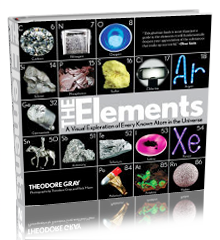Cast fish. | |||
| Sample Image | |||
| Cast fish. This is a fish cast out of sulfur in a cornbread mold. Cast sulfur? If you divide the periodic table up into broad groups, the first thing you notice is that almost everything is a metal. The transition metals alone are the largest group, but alkali metals, alkali earth metals and rare earth metals are all metals too. And then of course there are the normal metals to the right of the transition metals. The metalloids (silicon, germanium, arsenic, antimony, tellurium, polonium) are a lot like metals, and almost everything that's left are gases. In fact, the only elements that are not gases, and not metals or metalloids, are carbon, phosphorus, sulfur, selenium, bromine, and iodine. (And bromine and iodine are just barely not gases.) But despite not being a metal, and despite the fact that you almost always see it in the form of a powder, sulfur can easily be melted and cast on an electric stove. I wouldn't do it on a gas stove because of the danger of it catching fire, and even on an electric stove melting sulfur is a nasty proposition. Sulfur is rather smelly stuff, and it forms choking sulfur dioxide fumes: If you have any sort of breathing difficulty (and even if you don't) a whiff of the fumes from molten sulfur can choke you up pretty bad. One neat thing about molten sulfur is that it looks much hotter than it really is. A just-cast ingot of sulfur, which is only at a couple hundred degrees Fahrenheit (nowhere nears glowing temperature) looks exactly like red-hot cast iron, because the natural color of molten sulfur is a dull glowing-red. As it cools, it looks hotter and hotter as the sulfur turns from red to orange to yellow. A surprising thing happens to cast sulfur after it's finished cooling: Up to an hour later it changes crystal structure from deep yellow, sharply-defined dendritic crystals to the more familiar pale yellow powdery, flaky crystals. I don't know what exactly is happening, but in the case of this fish, it happened one scale at a time over the course of about an hour, until finally the whole fish had turned pale. I made this fish from cheap 90% pure soil sulfur from a garden shop. Source: Hardware Store Contributor: Theodore Gray Acquired: 16 March, 2003 Text Updated: 29 January, 2009 Price: $0.05 Size: 4" Purity: >90% | |||
|

